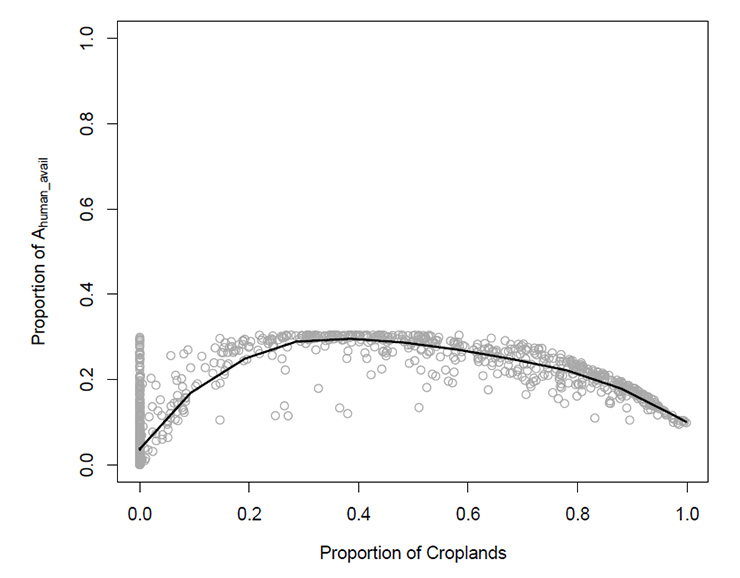
Ecological Archives E096-112-A4
Rafael X. De Camargo and David J. Currie. 2015. An empirical investigation of why species–area relationships overestimate species losses. Ecology 96:1253–1263. http://dx.doi.org/10.1890/13-2362.1
Appendix D. The proportion of human-dominated land cover that is available for bird species explained by remote-sensed land cover types.
Our analysis showed that there is an important amount of habitat that is available to open-habitat bird species in a landscape of 100km² in southern Ontario. The available habitat is positively correlated with the amount of remotely sensed land cover in all human-dominated classes (Table D1). Cropland land cover, which corresponds to 34% of the total land cover in southern Ontario and to 76% of the human-dominated land cover, is the main contributor to the availability of human-dominated habitat used by bird species (see Beta-coefficients, Table D1). The amount of cropland in each BBA quadrat is responsible for 45% of the variability found in the proportion of habitat that is available for birds (linear regression, F = 820.6, R²adj = 0.45, p < 0.0001). However, the relationship between human-dominated habitat that is available and cropland amount is peaked (Fig. D1).
Table D1. The results of a multiple regression predicting the proportion of human-dominated habitat (Ahuman_avail) that is available for bird species in 100 km² quadrants southern Ontario (estimated empirically from the species richness of open-habitat birds) as a function of the amount of remotely-sensed land cover in various categories (R² = 0.85, n = 991 squares). All coefficients are statistically significant, p < 0.0001.
Ahuman_avail categories |
Coefficients |
Beta-coefficients |
t value |
Recent cutovers |
0.64 |
0.14 |
11.00 |
Mining tailings |
0.49 |
0.24 |
19.62 |
Urban Areas |
0.14 |
0.09 |
7.44 |
Pasture and fields |
0.87 |
0.63 |
50.00 |
Croplands |
0.25 |
0.75 |
57.5 |

Fig. D1. The peaked relationship between the proportions of habitat that is available for avian species and human-dominated (Ahuman) land cover that is composed by crops fitted with a lowess smoothing line.